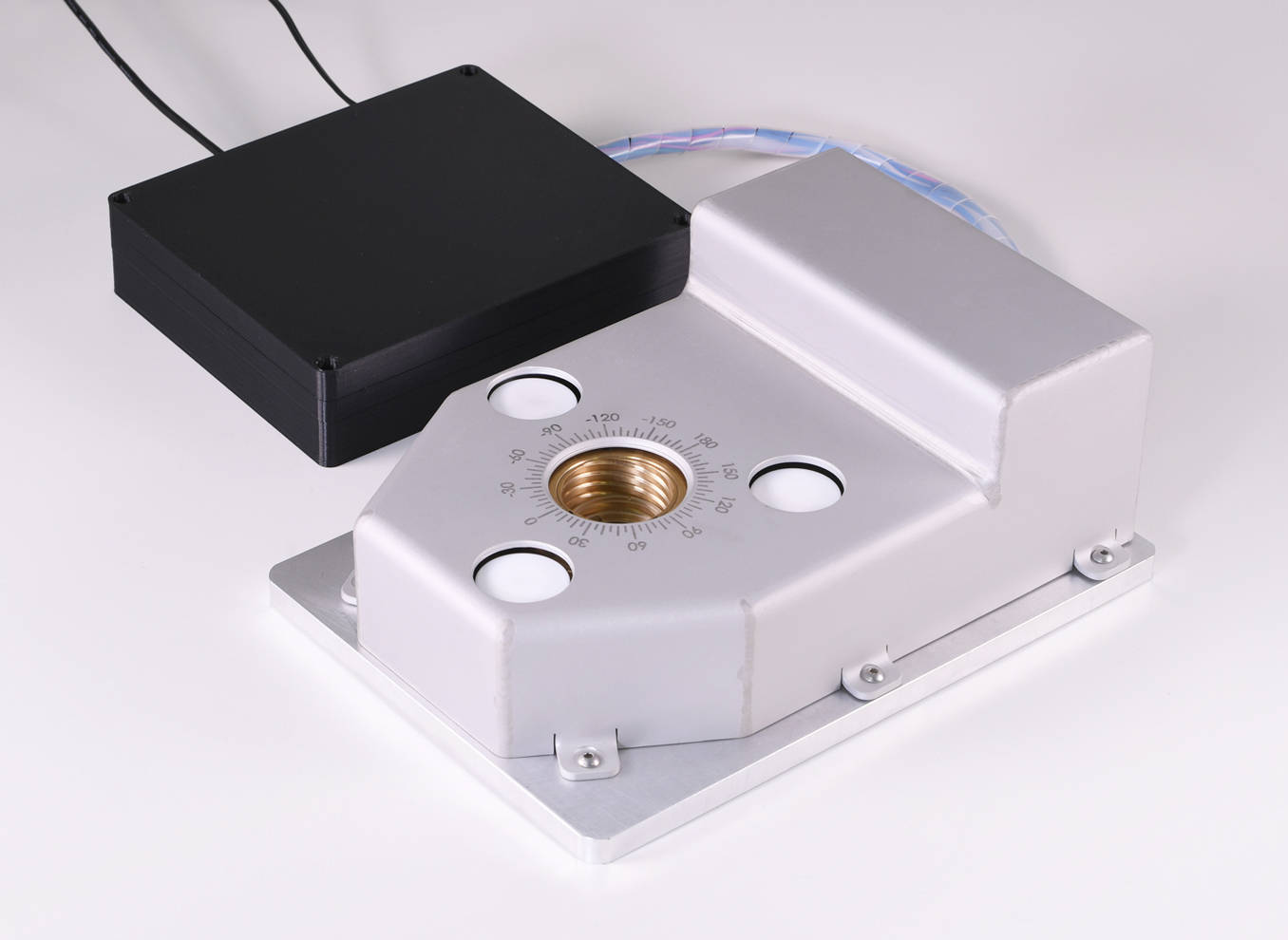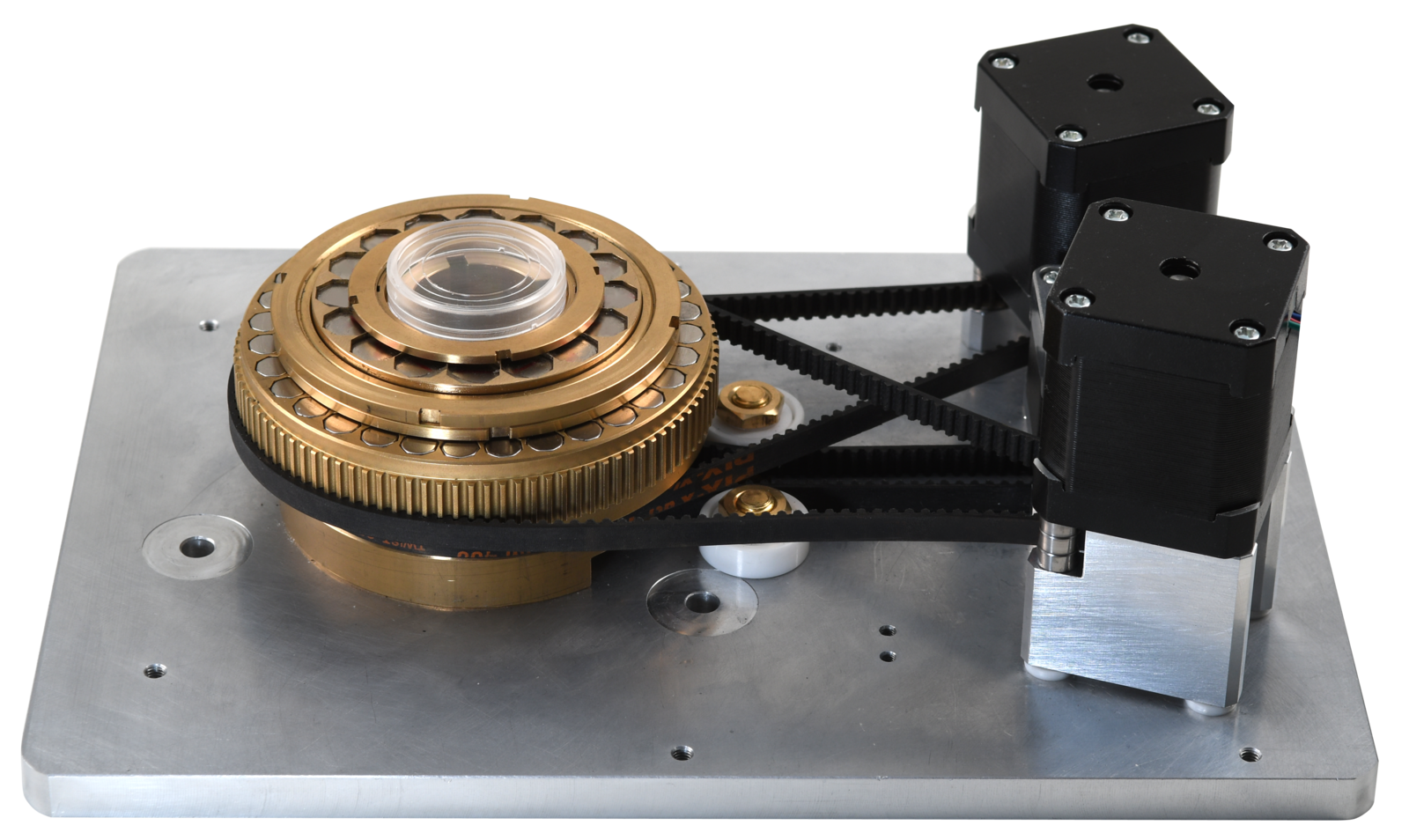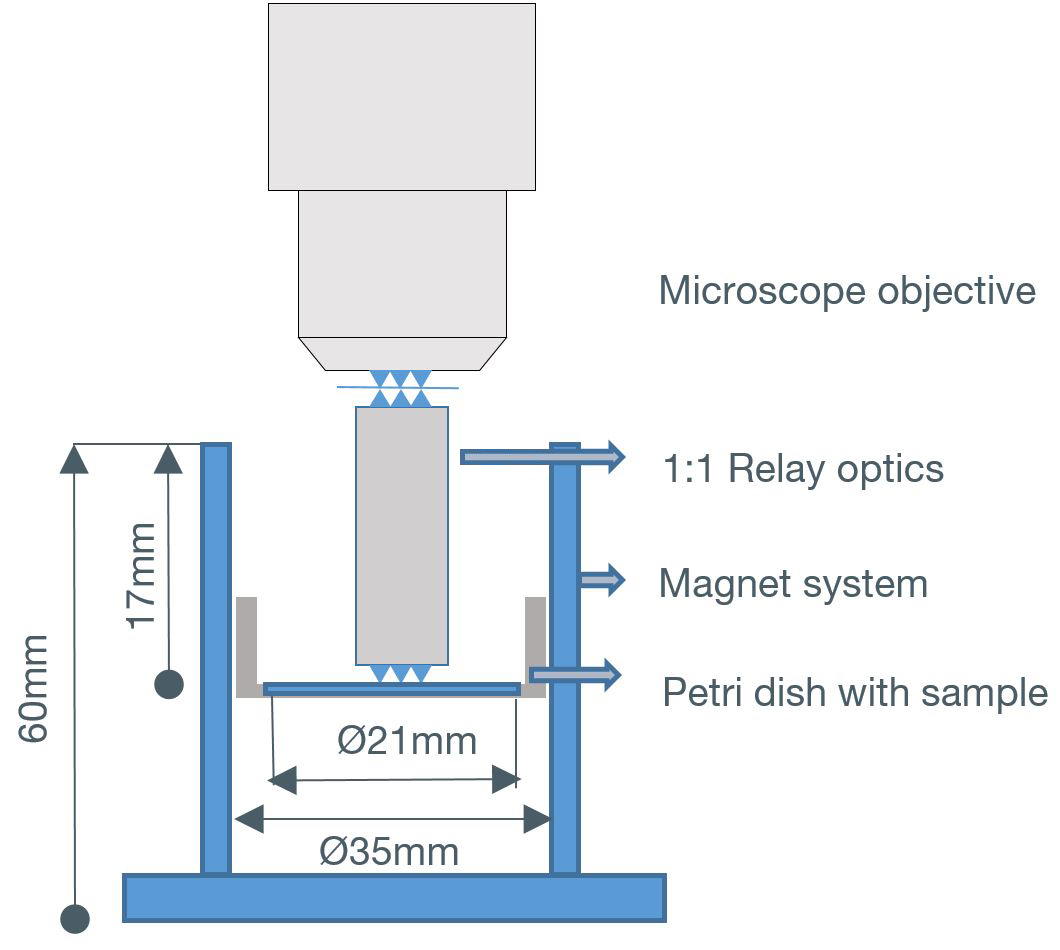MAGµMAN

Permanent magnetic tool for contactless guiding of magnetic particles
Nanoparticles gain more and more importance in biological and pharmaceutical research. In many fields, the controlled contactless motion of ferromagnetic nanoparticles is of great importance. Examples are cell manipulation, cell sorting, magnetic drug targeting (MDT), hyperthermia and motion of suspended cells doped with nanoparticles. Due to the dynamic evolution of this field of research, this enumeration can only be regarded as an extraction.

Features
- permanent magnet based
- intended for experiments in a Petri dish (ibidi Glass Bottom Dish 35 mm e. g.)
- for veterinary or even human medicine applications
What you can do with Sekels MAGµMAN

Move suspended iron oxide nanoparticles (SPIONs) along arbitrary trajectories

Observe nanoparticles under most commercially available microscopes

Program particle movements with supplied software
Principle of Sekels MAGµMAN
The system consists of several different annular magnetic subsystems which are based on the so-called Halbach priciple. It employs as well Halbach-dipole as -quadrupole arrangements which generate superimposed magnetic fields and field gradients.
The homogeneous field of the dipole causes reversible agglomeration of superparamagnetic particles which increases their speed compared to single particles moved by the same gradient field.
The required magnetic field gradients are tunable in amplitude and direction by turning different quadrupole subsystems in the unit around the vertical axis. These rotations are software assisted to enable an easy adjustment of the aspired gradient configurations and thereby reproducible manipulation sequences.
The process can be observed by means of a 1:1 relay optics (Ø 16 mm) which enables adjustment of different magnifications on the employed (reflecting) microscope without the objectives to be immerged in the magnet system. The objectives can be freely adjusted on the revolver.
The screen image circle is Ø 0.6 mm and the operating distance 0.4 mm. The image is corrected for a wavelength range of 460…700 nm and diffraction limited.
Optionally we offer a 1:1 relay optics which can be immerged in liquids.

Homogeneous magnetic field generated by the dipole magnet ring at compensating positions of the two quadrupole magnet rings.

Magnetic dipole field overlaid with the maximal field gradient created by turning both quadrupole rings in the same orientation. This configuration induces the maximal magnetic force on magnetized particles.
Haben Sie Fragen? Rufen Sie uns an oder schreiben uns. Wir beraten Sie gerne.
Dr. Stefan Hiebel
+49 6002 9379-46
shiebel(at)sekels.de
Properties
- Applicable for macroscopic and nanoparticles, nanoparticle doped cells, magnetic drug targeting…
- Widespread applications in life sciences, chemistry, physics…
- Neglectible power consumption and heat evolution, suitable for continuous operation
- Optimized for housing standard Ø 35 mm glass bottom dishes
- Low construction height of only 60 mm, footprint of only 250 x 180 mm² by outsourced electronics – compatible with most transmitted light and reflecting microscopes
- Image transfer by relay optics with resolution 100…500 µm preserves focusing and lateral displacement of focus point
- Homogeneous static field of 0.15 T for particle magnetization
- Superimposed spatially constant Gradient field of 0…6 T/m – tunable and 360° rotatable for controlled motion of magnetized particles
- Easy operation, steered by stepper motors
- Including electronics and software
